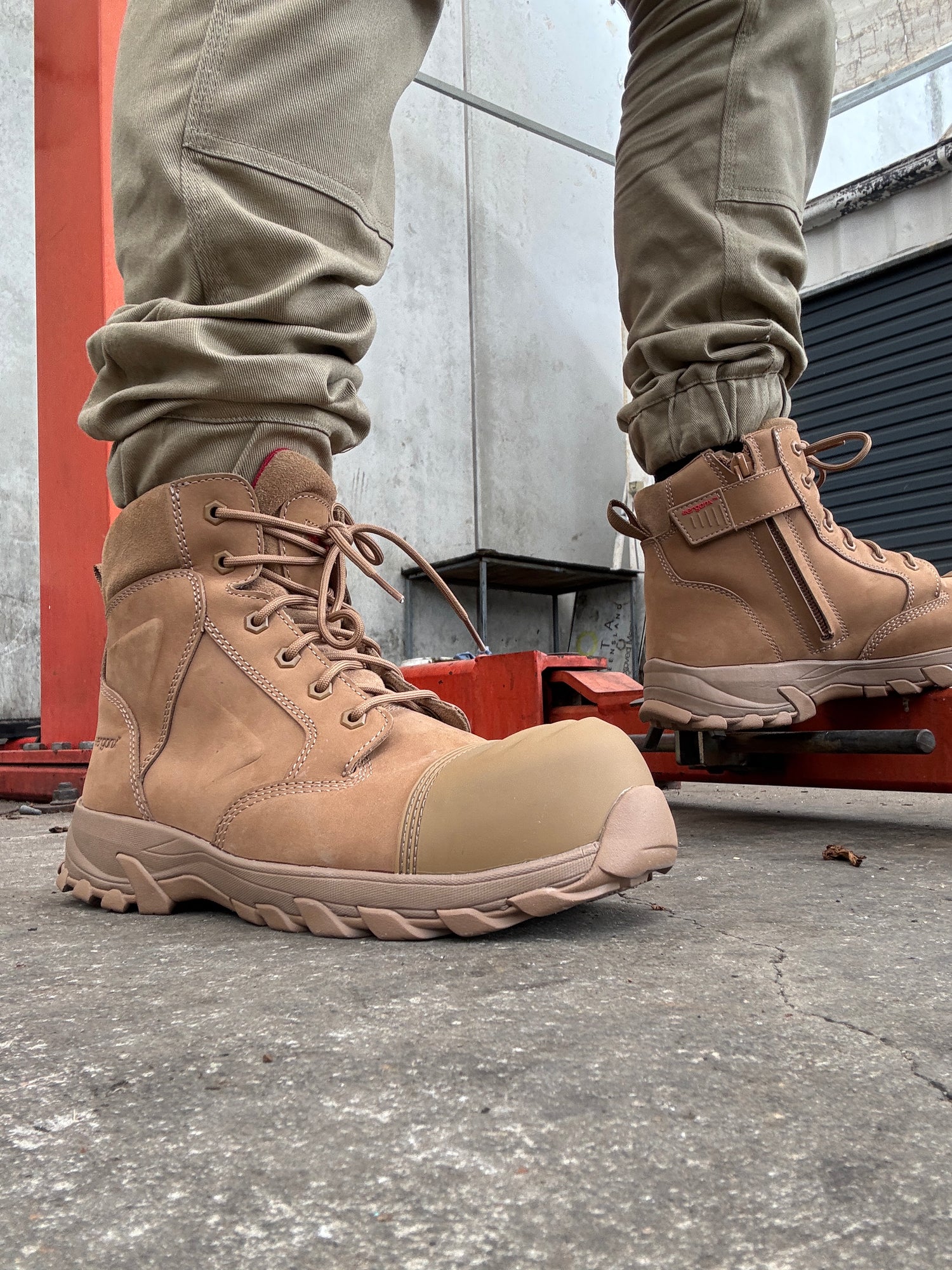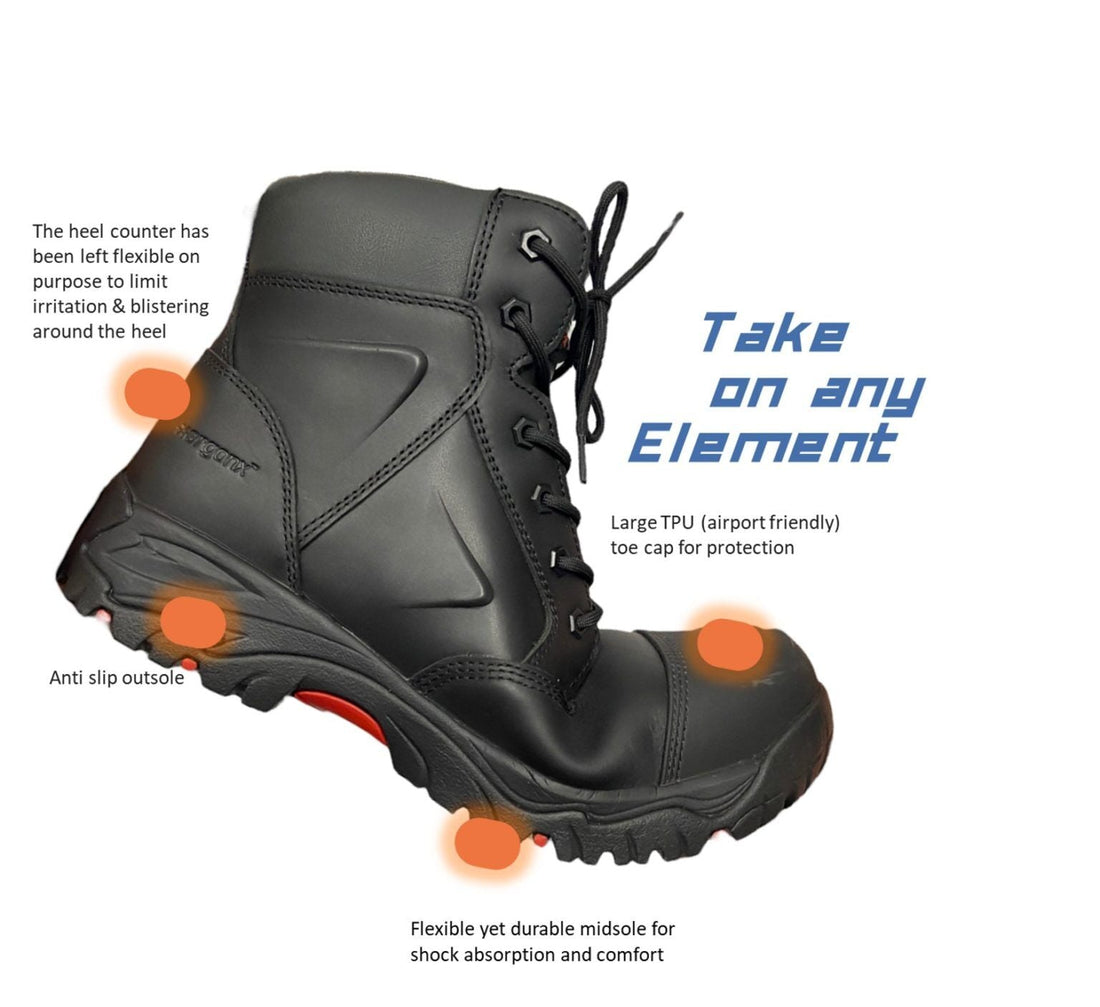Introduction
Ever wondered what the cryptic codes and numbers on the tongue of your work boots mean? You're not alone. For those in construction or any field requiring safety footwear, understanding these labels is crucial. They’re not just random figures; they represent the quality, safety features, and comfort levels of the footwear. In this guide, we’ll unravel the mystery behind safety footwear labeling and dive into what terms like work boots and safety boots signify.
Decoding the Label on Your Safety Footwear
When you look at the label of your safety footwear, it’s like reading a map guiding you through the features and protections your boots offer. The numbers and letters are not just gibberish—they’re there to inform you about the safety standards and specifications your boots meet. Here’s a breakdown:
- Class 1: Indicates the boot is made of leather, offering durability and breathability.
- S1P. These codes reflect the safety features included in the footwear:
S1 Enhancements over the basic safety standards, including a protective toe cap, anti-slip properties, heel energy absorption, and anti-static features.
P: Defines the presence of a puncture-resistant midsole, crucial for protection against sharp objects.
- HRO: Stands for heat-resistant outsole, protecting your feet in high-temperature environments.
- SRA: This slip resistance level indicates the footwear has been tested on tiles with detergent, ensuring you stay steady on slippery surfaces.
Understanding Safety Standards
Safety footwear labels comply with international standards, which guarantee that the boots provide a certain level of protection. The standards on your boot label tell you whether your boots are suitable for your work environment.
Key Safety Standards Include:
ASTM and ANSI: In the U.S., these standards cover anything from impact resistance to electric hazard protection.
EN ISO 20345: The European standard ensuring boots have a minimum 200-joule toe cap protection.
AS/NZS 2210.3: The Australian and New Zealand standard, often seen in Australian footwear, detailing various safety aspects like impact resistance and anti-static properties.
Choosing the Right Safety Footwear
So, how do you choose the right pair of boots among the multitude of options? Consider the following:
Work Environment: Identify potential hazards in your work area. Is it prone to heavy objects, sharp tools, or slippery floors?
Comfort and Fit: A well-fitting boot not only prevents blisters but also supports your posture, reducing fatigue.
Durability and Material: Leather provides durability, while modern synthetic materials can offer enhanced waterproofing and lighter weight.
Safety Footwear: Work Boots vs. Safety Boots
The terms "work boots" and "safety boots" are often used interchangeably, but there’s a subtle difference.
Work Boots: Generally designed for comfort and durability. They may not always include safety features unless specified.
-Safety Boots: Specifically engineered to include protective elements like steel toe caps, puncture-resistant soles, and slip-resistant properties.
Understanding the labelling of safety footwear is essential for selecting the right type for your needs. Whether you’re a tradie working on a construction site or in a factory, picking the correct pair could make all the difference.
FAQs
1. What do the numbers on the tongue of my work boots mean?
The numbers and codes indicate the safety features and standards your boots meet, such as toe protection, slip resistance, and material durability.
2. Are all safety boots heat resistant?
Not all safety boots come with heat-resistant outsoles. Look for the HRO marking if you require this feature.
3. How can I ensure my boots have anti-slip features?
Check for labels like SRA, SRB, or SRC, which denote varying levels of slip resistance tested on different surfaces.
4. What’s the difference between S1 and S1P ratings?
S1 includes basic safety features like a toe cap, while S1P adds a puncture-resistant midsole for additional protection.
Conclusion
The labelling of safety footwear, such as work boots and safety boots, holds the key to understanding the protection and comfort they provide. By familiarizing yourself with these codes and standards, you can ensure your footwear is well-suited to your specific work environment. So, next time you lace up your boots, take a moment to glance at the label—it’s your first step towards better foot protection and comfort on the job.


